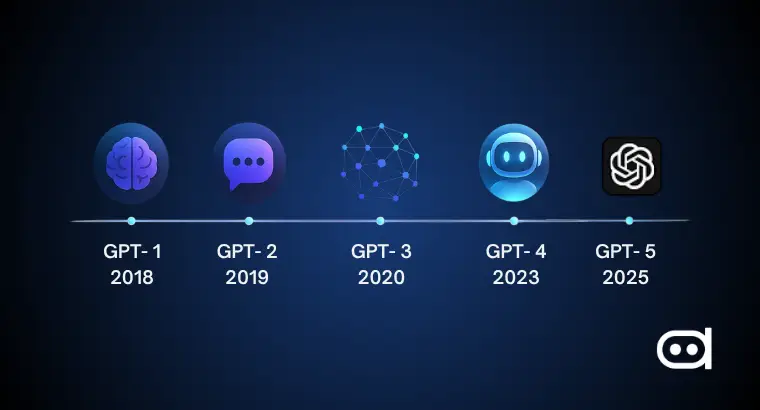
As the employment sector becomes increasingly competitive, numerous organizations have implemented Applicant Tracking Systems in their recruitment processes. ATS is a software application that assists organizations in the management of the recruitment and employment process. Since reaching human recruiters is a priority, ATS-ready resumes are prepared to enhance the chances of passing these systems. Most job applicants fail to develop ATS-compliant resumes owing to formatting, keywords, or other issues. Fortunately, AI tools can help applicants rewrite their resumes to be ATS-compliant, enhancing their interview prospects.
Factors That ATS Algorithms Consider
To make an ATS-optimized resume, one must first grasp what ATS algorithms look for. ATS systems analyze resumes based on their formatting, keyword density, section placement, and how well the relevant experience and skills match the role.
Let’s delve deeper into some of the factors that influence ATS.
Keyword Relevance Related to Job Profile
To achieve effective candidate-job role matching, ATS utilizes several keywords usually taken from the job adverts. These can include skills, certifications, and skill-based terminologies. AI resume tools assist in naturally embedding these keywords into the resume, thereby enhancing the resume’s likelihood of passing the ATS filtering stage.
Layout Structure
When preparing an ATS resume, the rule is simple—it should be clean and straightforward without any distractions. It should include elements such as headings, bullet points, and sections like ‘experience’ and ‘skills.’ The resume formatting for ATS is simple and does not require the use of complicated layouts, graphics, or boxes that can result in confusing the system.
Experience and Skills Matching
An ATS checks if your work experience and job skills meet the job description and gives higher consideration to those candidates who are closer to it. Highlighting relevant experience, certifications, and specific technical or soft skills improves alignment with ATS algorithms.
Few Common Reasons Resumes Fail ATS Screening
Despite their qualifications, many applicants struggle to pass ATS filters and wonder how to pass ATS. This is because of specific resume mistakes. Here are common errors that can prevent resumes from being reviewed:
Too Many Graphics or Unreadable Fonts
Graphic elements, pictures, and strange typefaces could potentially cause parsing issues in ATS systems, which primarily rely on text and may completely disregard or misread graphic components. For better integration with ATS, use standard basic typefaces and refrain from using visuals whenever possible.
Incorrect File Format
Certain document types, such as PDF and Word documents (.doc or .docx), are compatible with ATS systems. The ATS will likely reject the resume if you use an unsupported file type.
Lack of Relevant Keywords
Failing to include ATS resume keywords from the job posting might also lead to rejection. ATS resume keywords are crucial for matching job requirements, and AI resume tools can help ensure these keywords appear strategically throughout the resume content.
Use of Tables or Columns
While using tables and columns improves the appearance of the resume, it may potentially cause issues with the ATS. These features tend to break or conceal key data; thus, it is advisable to stick to a simple design without any such features.
How AI Tools Help Optimize Your Resume for ATS
As more job seekers turn to AI tools to optimize resumes for ATS readiness, these tools continue to provide useful services for resume development by job applicants.
- Keyword Optimization: As per the job descriptions provided, tools like Kickresume, Teal, and Rezi add appropriate keywords to the resume. This ensures that the resumes are more likely to cut through the ATS filters since the exact same sentences and phrases have been incorporated.
- Grammar Corrections: Research shows that professional ATS screen resumes, rank candidates, and even assign a specific grade based on clarity and professional presentation. The tools help eliminate poorly written resumes by spotting grammatical errors and misplaced words, removing redundancies, and making the resume presentable.
- Customized Templates: AI tools streamline your resume creation process by providing standard ATS resume templates that adhere to the ATS’s formatting, organization, and arrangement requirements, ensuring the ATS can easily read the content. These templates reduce the incorporation of graphics and tables that may hinder the ATS from parsing the document effectively.
Best AI Tools to Ensure ATS-Readiness
Numerous AI resume-building solutions include ATS integrations. These tools not only make the resume creation easy but also ensure that they are ATS compliant. Here are some of the most effective tools available for this purpose:
- Kickresume: The most rewarding aspect of Kickresume is the ease of use. Kickresume has ATS-compliant templates and provides automated keywords for improved ATS saturation.
- Novoresume: Novoresume has several professional templates that are also ATS-friendly. It also offers keyword suggestions and phrases for specific jobs.
- Rezi: Rezi scans the provided job postings and looks for certain keywords to adjust your resume content accordingly so that it will pass through most ATS.
- Zety: This system has downloadable templates for ATS with formatting options, modification, and enhanced keyword suggestions. Zety also provides tips on how to organize content in order to improve its accessibility and relevance.To know more about AI Resume Tools in the market and how they compare to each other, read our in-depth article.
Tips for ATS Optimization
Many elements affect how well an ATS will rank a resume based on its structure, keywords, and formatting. Here are a few tips to enhance ATS optimization:
Keeping the Resume Concise
When composing a resume, keep the text to one or two pages. Since ATS and recruiters generally prefer clear, readable texts, include only significant achievements and eliminate any irrelevant or outdated information. Keep the CV brief and job-specific. Provide relevant skills and achievements, shorten outdated positions, eliminate redundancy, highlight measurable outcomes, and use a clear, professional format.
Using Consistent Formatting
Consistent formatting, using standard sizes for headers, fonts, bullets, and other elements, facilitates ATS readability. Do not use any creative formatting that may disrupt the scanning process.
Incorporating Relevant Keywords Throughout the Resume
It is crucial to include all the pertinent keywords related to the skills and job titles associated with the desired position. Place these appropriately in sections like “experience” and “skills”, but avoid overloading them in a single section.
Using Strong Action Verbs
ATS algorithms value impactful language. Strong action verbs such as “developed,” “managed,” or “implemented” at the beginning of each bullet point strengthen your statements and align with the ATS systems’ preferred language.
Conclusion
Nowadays, creating an ATS-compliant resume is a necessity, as most employers rely on automated hiring systems for candidate filtration. AI tools can also analyze a resume to ensure its ATS-ready status, including keyword integration, neat layout, and concise content. By following best practices for ATS optimization and utilizing AI-driven tools, job seekers can significantly improve their chances of passing ATS screening and landing interviews for their dream jobs.
















